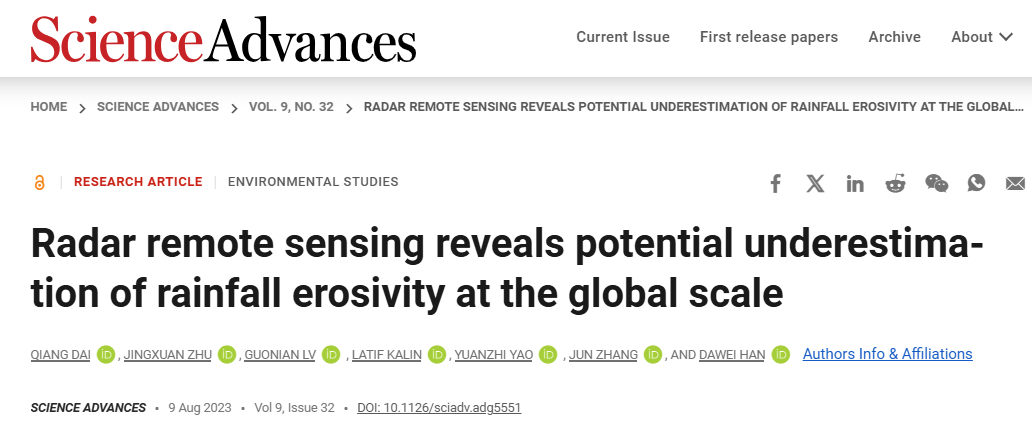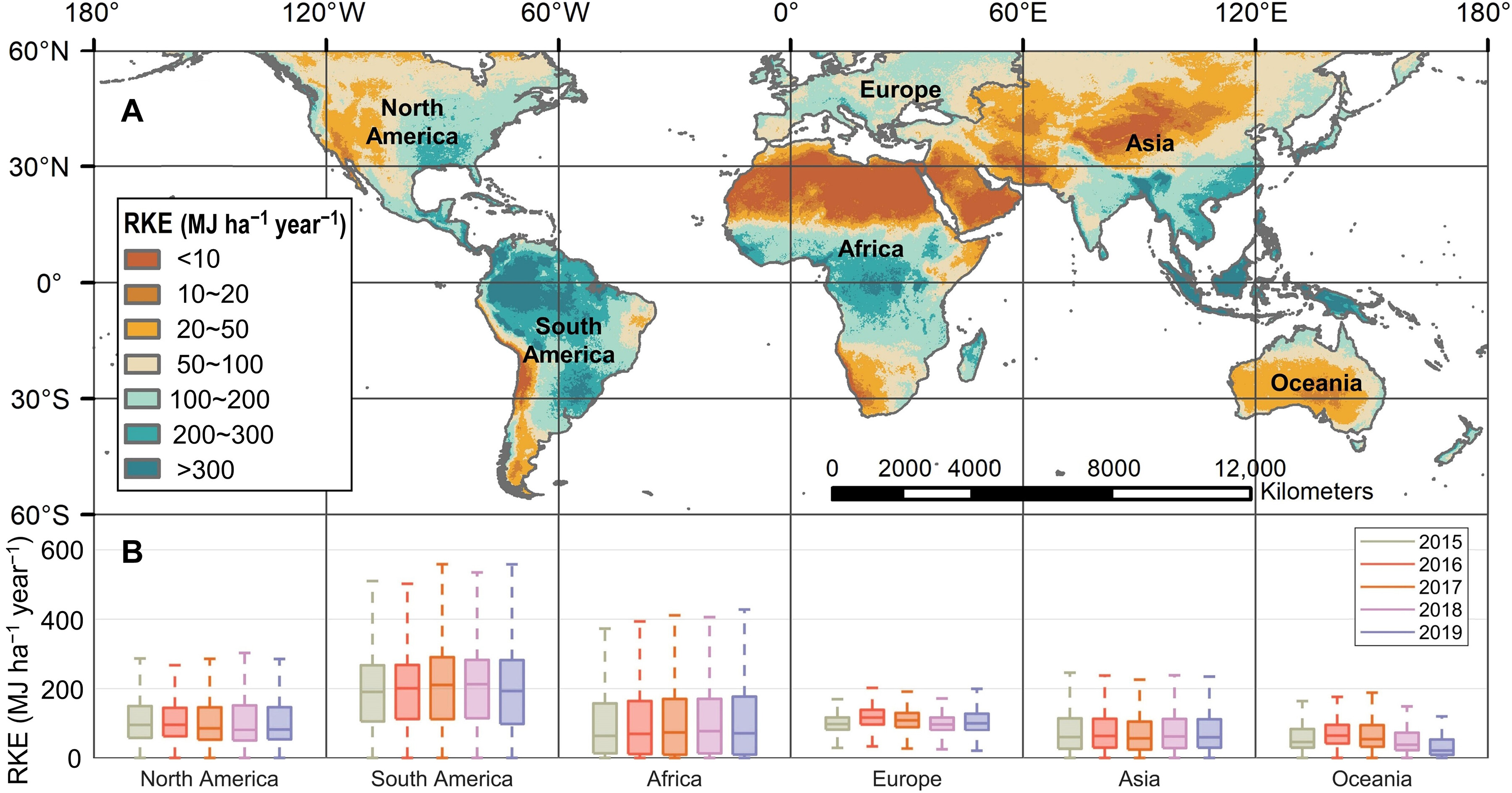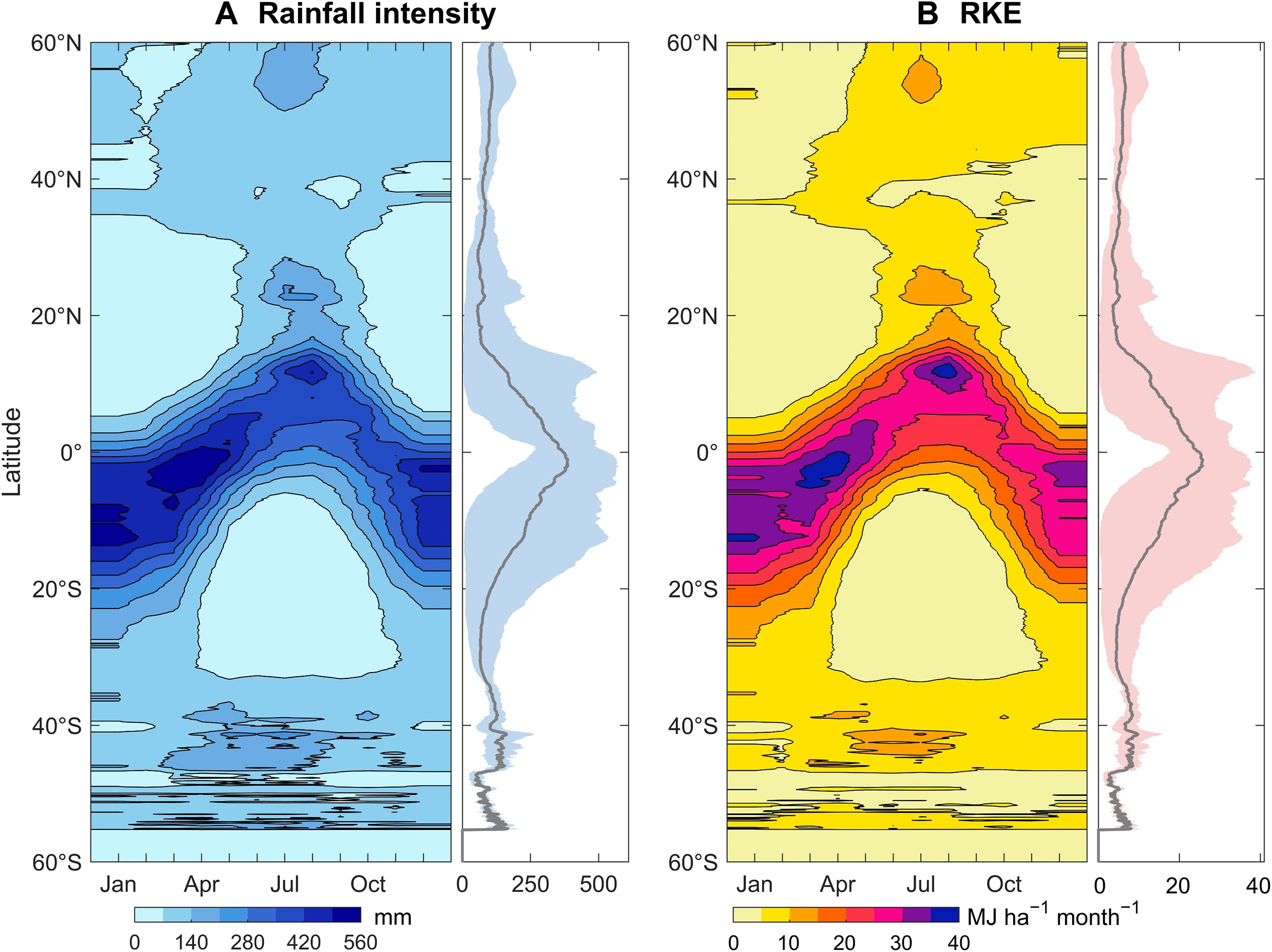The group has made new progress in the field of global soil erosion calculation:

The problem of soil erosion not only affects food production and the health of ecosystems, but can also have a negative impact on water sources, biodiversity and other sustainable development goals. In the face of this global challenge, rainfall kinetic energy (RKE) has become an important factor in assessing soil erosion because it reflects the intensity and energy of raindrops, which directly affects the degree of soil denudation and scouring. However, accurate estimation of the kinetic energy of rainfall on a large scale has been a major challenge in the field of geography due to the spatial and temporal heterogeneity of rainfall and the complexity of raindrop microscopic features. In the past, researchers usually relied on empirical formulas and simulation models to estimate rainfall kinetic energy, but these methods often have limitations and cannot accurately reflect the actual situation.
Based on the team's existing work on radar remote sensing and raindrop microphysical characterisation, the article obtains a high-resolution dataset of global rainfall kinetic energy for the years 2015~2019 from 32,100 satellite orbit files of GPM dual-frequency radar by means of raindrop microphysical inversion algorithms, and for the first time, statistically estimates the total annual average global rainfall energy (1.36×10^18^Joules) and the unit-area rainfallenergy (11.66×10^3^J) per unit area.

The study further compares the results of erosivity calculations based on rainfall energy with those based on traditional rainfall mass, and finds that rainfall erosivity is underestimated globally, especially in some low-income countries, where rainfall energy and resulting rainfall erosivity are significantly underestimated. The use of rainfall energy obtained from radar observations can improve the accuracy of global rainfall erosivity calculations by 8 to 20 per cent. The results of the study are of great significance for soil conservation research and sustainable development practices in terrestrial ecosystems.

First author: Prof Qiang Dai
Corresponding author: Prof Guonian Lu, Yuanzhi Yao
Other authors: Dr Jingxuan Zhu, Associate Professor Jun Zhang, Professor Latif Kalin, Professor Dawei Han
Link to the paper: https://www.science.org/doi/10.1126/sciadv.adg5551